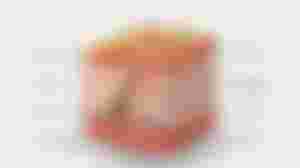
The lawn consists of tens of thousands of individual blades of grass that together form the grass surface. Similarly, there are thousands of individual hairs on the head that together form the hairy part of the head. When a blade of grass is uprooted, it can be seen that the green blade has roots. Through this small tangle of roots, the leaves extract water and nutrients from the soil in order to survive. The way the hair is attached to the head is somewhat similar. The hair does not penetrate deep into the body. There is no central factory for making hair, deep in the body, from which a lot of hair comes out. Instead, leather is a shallow ground for hair; hair roots are found in the skin.
Hair strands are a long tube of keratin, a hard protein that also makes up nails. Although it looks smooth, the hair is actually covered with scales, like a fish. This layer of keratin scales is called the cuticle (these scales can be seen with a microscope). They get messy when the hair is dry and damaged - by excessive brushing, drying with hot air and the use of harmful dyes. In order for the hair to be shiny, in order to shine, the scales must be flat like the surface of a mirror. Inside the tubular hair is a spongy nucleus. Because of it, the hair is flexible, so it does not break when bent (thin airy hair sometimes does not have a spongy core). Beneath the surface of the skin, at the end of the hair, is its root. Each hair is enclosed in a thin sheath called a follicle. The follicle has the shape of a bulb and is rooted in the dermis, the inner layer of the skin, like a tulip bulb planted in the ground. Near the top of the follicle, just below the surface of the skin, the sebaceous glands secrete fat which, if not washed away, accumulates on the hair.
Here's how hair grows. At the bottom of each follicle bulb, there are cells arranged in the shape of a ring, which supplies nutrients and oxygen to a network of blood vessels. These cells divide to form new cells, in the same way that cells are created throughout the body. New cells accumulate in the shape of a tube and erupt through the follicle. Hair is formed from dead and hardened cells on the inside of the tube. The cells of the outer layer of the tube also die and harden, creating a cover, ie. wrapper. As they protrude through the follicle towards the surface of the skin, the hair and its sheath are firmly attached. However, near the surface of the skin, the chemicals released by the walls of the follicle corrode the sheath and reveal the hair beneath it. The hair is now, covered only with a layer of scales, lubricated with fat from the sebaceous glands. Then it breaks through the skin and comes out. It becomes hair. That is why hair, no matter how much it is cut or shaved, will always continue to grow, between 12.5 and 25 millimeters per month.

nice post thanks